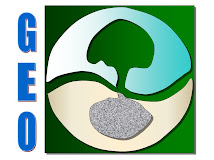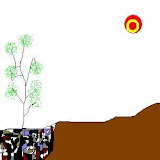Charcoal as a component for soil fertility improvement in agriculture production is a fact known to people from ancient civilizations. Improving the soil fertility by all means for food security was the major concern of farmers since several centuries. Farmers are more sensitive in this aspect, because farming is their livelihood.
Knowingly / unknowingly as a cultural / traditional practice. Charcoal is being added to soils. From crop residue and weeds, charcoal a byproduct from stoves, Charcoal from potters kiln, etc. If farmers have burnt biomass in the fields charcoal and ash are the by-products formed.
Agriculture biomass available in India is about 800 million tones. Burning crop residue in the respective fields is a common phenomenon as preparatory measure of fields before monsoon rains. The percentage of crop residue burnt varies from place to place and it is based on the type of crop chosen.
From the following major crops in India the quantity of crop residue is as follows (in million tones): Rice (13.1), Wheat (15.4), Sugar(21.6), G.Nut (3.3), Mustard (4.5), Cotton (11.8)
Total 69.9 million tones crop residue from the above six major crops.
In traditional slash and char shifting cultivation practice about 50% of the biomass is believed to be converted into char / bio-char.
On an average 30 to 50 kgs of charcoal is produced in an acre of any crop, even if crop residue is burnt openly (not recommended). 100 to 250 kg of charcoal could be produced through controlled pyrolysis in many fields from crop residue per season from one acre of land. Say if the half-life of the charcoal biomass existance in respective fields is about 40 years, there would be cumulative accumulation of charcoal in the respective fields due to the parctice of burning biomass in the fields. In India majority of the fields in cultivation are not less than 100 to 200 years old. It means that there is atleast 10 tons to 20 tons of cumulative charcoal in such fields. Similary there is also presence of pottery shreds and bones in ths soil. Before confirmation of quantities, there is a need to actually take sample field plots and measure the presence of charcoal, pottery shreds and bones (chicken, mutton, fish, etc.) in the soil.
As I have discussed with farmers, on why they prefer to burn biomass in the fields, they responded that, it is easy to do weeding, ploughing, and other activites, without stumps / biomass occuring in the field, results in baking of the soil, kills certain larvae dormant in the soil waiting to damage crops and also the presence of termites and ants. Termites and ants are sometimes resposible for eating away young saplings / live crops / roots. The good properties of them is their act of bringing minerals from deep down. Ants also act as predators for certain harmul insects. Finally they said that, whereever the biomass is burnt in the fields the crop grows stronger, healthy and good.








1 comment:
They mention that where ever the biomass is burnt in the fields the crops are healthier.
Do you know if they have tried to make the char off-field and take it to the field for testing.
I also like the aspect of killing the larva as a pro for on-field burning. In affect sterilizing the soil prior to planting.
Post a Comment